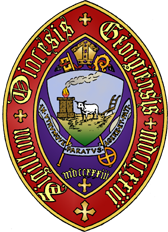The Rev. Bartholomew, then Rector of Christ Church, Savannah, petitioned the Society for the Propagation of the Gospel for a catechist to teach enslaved Africans in the Christian faith. They sent Joseph Ottolenghe (1711-1775) to serve in the role. Zouberbuhler died and left much of his estate, consisting of more than 3,000 acres of land and 52 enslaved persons, to fund the effort. The sale of persons as property then funded the work of the Episcopal mission to the roughly 1,000 enslaved persons working on rice plantations south of Savannah. The catechist who would later be described as “hindered by his own prejudices” soon ceased his teaching duties.
 Bishop Stephen Elliott personally trained and then ordained the Rev. William C. Williams to serve as the pastor for what became the Ogeechee Mission. Williams established a school and a chapel on each of the three plantations he then served. Williams reported to diocesan convention on his work in 1846 saying,
Bishop Stephen Elliott personally trained and then ordained the Rev. William C. Williams to serve as the pastor for what became the Ogeechee Mission. Williams established a school and a chapel on each of the three plantations he then served. Williams reported to diocesan convention on his work in 1846 saying,
“I am engaged by several planters to labour among their negroes. There are not a dozen whites within the limits of the parish, so that my whole time is devoted to the blacks. I have had service twice on Sunday, besides a weekly lecture, alternating between the different plantations. It has also been my practice to read one evening in every week to such as felt disposed to attend. On each of the plantations, schools have been established for the oral instruction of the children…The number of children connected with the schools is about eighty. The children learn and retain much better than is generally supposed, and any one who will devote himself to the work, with the determination not to be discouraged, will in the end find their labour amply rewarded.”
Williams added, “The Liturgy has been introduced as fast as possible. The negroes seem much interested in the responsive parts of the service and I am convinced that the constant use of the Liturgy among them would be of the greatest benefit.”
 By 1860 his congregation was the largest in the Episcopal Diocese of Georgia. This was not the only congregation founded on plantations. In 1851, Bishop Elliott reported to convention on the work of the Rev. James H. George, a Deacon, who took charge of a mission in the Albany area. The deacon divided his time among three stations on neighboring plantations owned by Episcopalians. First St. Paul’s and later St. John’s in Albany were the result of that work.
By 1860 his congregation was the largest in the Episcopal Diocese of Georgia. This was not the only congregation founded on plantations. In 1851, Bishop Elliott reported to convention on the work of the Rev. James H. George, a Deacon, who took charge of a mission in the Albany area. The deacon divided his time among three stations on neighboring plantations owned by Episcopalians. First St. Paul’s and later St. John’s in Albany were the result of that work.
St. Bartholomew’s became the name for the church built in the Burroughs Community south of Savannah for those who had been part of the Ogeechee Mission prior to emancipation. The church was a vital center for the community with more than 400 members in the early 1900s. The church is now a parochial mission of St. Paul the Apostle in Savannah and continues two Sunday afternoons a month with a handful of active members with family ties to the earliest parishioners.
Pictured above: Enslaved laborers in the rice field (above) and St. Bartholomews (bottom).
